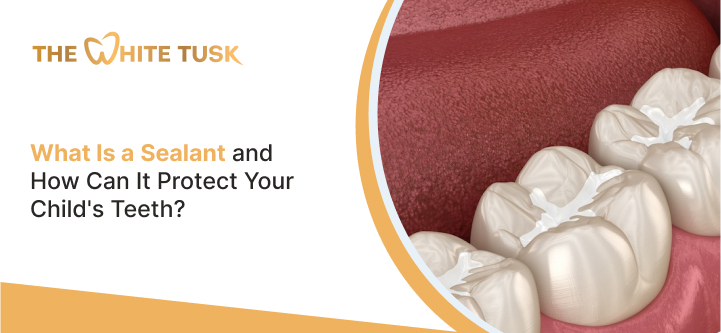
If you’re a parent, you’ve likely heard about dental sealants, but you may be wondering: What is a sealant, and how can it benefit your child’s oral health? The truth is that children’s teeth are particularly vulnerable to cavities, especially in hard-to-reach areas like the molars. Without proper protection, these tiny pits and grooves can easily trap food and bacteria, leading to decay. Fortunately, dental sealants offer a simple, effective solution to prevent this damage. In this article, we’ll explain exactly what a sealant is, how it works, and why it’s one of the best ways to protect your child’s smile for years to come.
A dental sealant is a thin, plastic coating applied to the chewing surfaces of the back teeth—typically the molars and premolars. These teeth have deep grooves that are difficult to clean thoroughly with a toothbrush, making them more susceptible to decay. Sealants “seal” these grooves, providing a smooth, protective layer that keeps out food particles and bacteria.
Though sealants are most commonly applied to children’s teeth, adults can benefit from them as well. The primary goal of a dental sealant is to create a barrier that prevents cavities from forming by protecting the enamel.
Children’s teeth are especially vulnerable to cavities due to a few key factors:
Because of these vulnerabilities, children are at a higher risk for cavities, especially in those tricky areas like the molars. This is where dental sealants come in, offering extra protection where kids need it most.
Dental sealants are applied to the grooves of the teeth in a quick and painless procedure. Here’s how it works:
The sealant forms an invisible barrier that stays in place for several years, providing long-lasting protection against cavities.
Dental sealants are one of the easiest and most cost-effective ways to protect your child’s teeth. Here are five benefits parents should consider:
The ideal time to apply dental sealants is when your child’s permanent molars come in, usually around ages 6 and 12. At these ages, the molars’ grooves are especially deep and more prone to trapping food and bacteria. Applying sealants early can help protect these teeth for the rest of your child’s childhood and beyond.
In some cases, even primary (baby) teeth may benefit from sealants if they have deep grooves. It’s a good idea to talk with your pediatric dentist to determine the best timing based on your child’s dental development.
While both dental sealants and fillings serve to protect teeth, they are quite different in their purposes:
Sealants are a proactive approach to dental health, while fillings are reactive. If your child’s teeth are free from cavities, sealants can offer peace of mind and protect them from potential damage in the future.
The process of applying dental sealants is straightforward and takes only a few minutes per tooth. Here’s a quick breakdown of the steps:
Yes, dental sealants are completely safe for children. The materials used in sealants are FDA-approved, and the procedure is well-established and has a long history of success. The most common materials used for sealants are made from composite resins or glass ionomers, both of which are non-toxic and safe for children.
Sealants are also BPA-free, addressing any concerns that parents might have about chemicals in dental products.
Dental sealants can last anywhere from 5 to 10 years, depending on how well they are maintained. While the sealants are durable, it’s important to have your child’s sealants checked regularly by a dentist to ensure they haven’t worn down or chipped. If needed, the dentist can reapply or touch up the sealant to ensure continued protection.
Regular dental checkups will also allow your dentist to monitor the condition of your child’s teeth and sealants, making adjustments as necessary.
Dental sealants are one of the best ways to prevent cavities in your child’s back teeth, offering long-lasting protection with minimal maintenance. By understanding what a sealant is and how it works, you can make an informed decision about your child’s dental health. If you’re interested in learning more or scheduling a sealant application for your child, talk to your dentist today. Protect their smile, and make cavity-free living a priority!